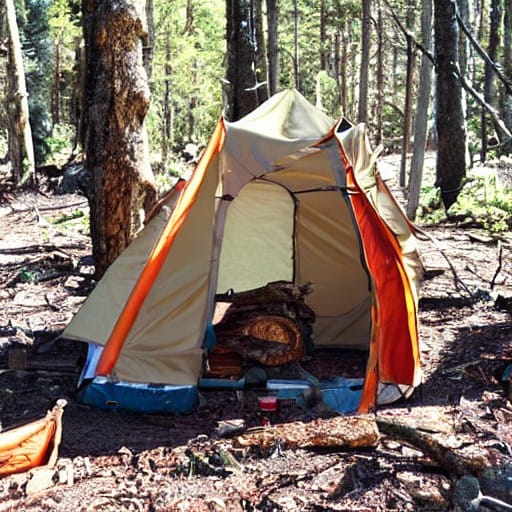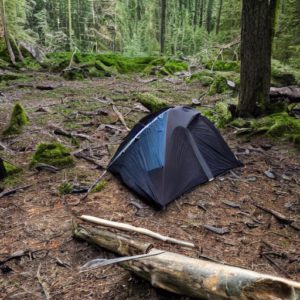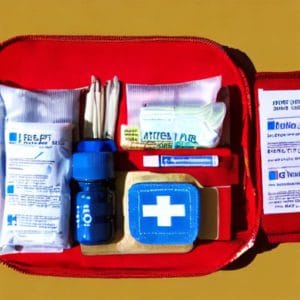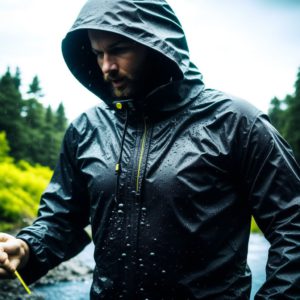Your Ultimate Wilderness Survival Guide: Master Skills for Outdoor Resilience
To thrive in the wilderness, possessing a unique set of skills, maintaining a calm demeanor, and engaging in thorough preparations are crucial. This extensive guide is designed to equip you with essential knowledge for navigating and succeeding in the great outdoors, whether you're a passionate adventurer or unexpectedly facing a survival situation.

Develop a Resilient Mindset: Stay Calm and Analyze Your Situation
Cultivating the right mindset is pivotal to executing a successful survival strategy. In moments of crisis, maintaining a calm and collected mental state becomes your greatest asset, especially when survival hangs in the balance. When panic clouds judgment, it leads to rash decisions and impaired reasoning. Therefore, fostering the ability to remain composed is paramount.
Picture yourself lost in a sprawling, uncharted wilderness, far removed from the comforts of civilization. In such moments, fear can easily infiltrate your thoughts. It is essential to pause and regain your composure, allowing clarity to replace doubt. Panic can spread like wildfire, exacerbating the challenges you face. In contrast, a tranquil mind serves as a reliable compass, guiding you through the chaos of uncertainty.
Once you have quelled your anxious thoughts and taken a deep breath, shift your focus to meticulously assessing your surroundings. This involves keenly observing the resources at your disposal and understanding the potential threats lurking in the wild. Are there hazardous terrains or wildlife nearby? What resources can you utilize for shelter, water, or signaling for help?
Assessment is not merely a task; it forms the foundation upon which your survival strategy is built. Through this careful evaluation, you can make informed decisions, prioritize essential actions, and devise a coherent plan that addresses the challenges posed by the wilderness.
The mantra “stay calm and assess” embodies the psychological resilience required when facing unforeseen challenges. It signifies the moment you acknowledge the gravity of your situation yet choose to respond calmly rather than react chaotically. By fostering a peaceful mindset and conducting a thorough assessment, you create a structured approach to survival. In the face of the unknown, remember that your thoughts can be the key to unlocking survival.
Establish Survival Priorities: Your Strategic Approach in the Wilderness
Understanding survival priorities is akin to choreography in a complex dance with nature. Consider it a strategic framework guiding your actions during a survival emergency, ensuring that you systematically address critical needs.
The foremost aspect of this guideline is prioritizing protection. Your safety is non-negotiable, and creating a secure environment must take precedence. This entails protecting yourself from immediate threats such as harsh weather, wildlife, and other potential hazards presented by the natural world.
Once you have established a protective layer, the next focus shifts to your location. A safe and secure site serves as your sanctuary. Constructing a robust shelter not only shields you from the elements but also acts as a psychological anchor, providing a space to regroup, strategize, and endure the challenges that nature may throw your way.
Following protection and location, the next priority is securing water—the essential elixir of life. Identifying and sourcing clean water is critical, as dehydration can quickly diminish your physical and mental capabilities. Use purification methods such as boiling, purification tablets, or a reliable water filter to transform potentially contaminated water into a life-sustaining resource.
Once you have addressed the issues of protection, location, and water, you can then focus on the matter of nutrition. Although food is fundamental, it takes a backseat to more immediate needs. This phase may involve foraging for edible plants, learning basic trapping techniques, or attempting to fish. Nature becomes your provider of sustenance.
The final aspect of survival priorities is signaling for help. Once your essential needs are met, it's time to make your presence known. This phase increases your chances of being spotted and rescued, whether through the use of bright colors, signaling devices like whistles and mirrors, or crafting identifiable signals.
The rule of survival priorities serves as your guiding compass in the wilderness, ensuring that you navigate challenges methodically. By adhering to this structured approach, you not only enhance your chances of survival but also regain a sense of control in an otherwise unpredictable environment. With this roadmap, the chaos of survival transforms into a manageable journey leading to rescue and safety.
Constructing a Shelter: Your Essential Defense Against the Elements
 Building a shelter is the cornerstone of wilderness survival. It stands as your first line of defense against the elements and the unpredictability of the great outdoors. Mastering this essential skill involves creating a refuge that not only protects you from adverse weather but also serves as a psychological anchor amid uncertainty.
Building a shelter is the cornerstone of wilderness survival. It stands as your first line of defense against the elements and the unpredictability of the great outdoors. Mastering this essential skill involves creating a refuge that not only protects you from adverse weather but also serves as a psychological anchor amid uncertainty.
When faced with the challenge of finding shelter, your resourcefulness becomes a vital asset. Your mission is to create a safe space using the abundant natural resources around you or any equipment you may have on hand. This could involve constructing a temporary lean-to from sturdy branches and foliage, repurposing a tarp or emergency blanket, or digging into the landscape for additional protection.
Understanding the fundamental principles of shelter construction is critical for survival. It’s not just about erecting a physical barrier against the elements; it’s about fortifying your ability to withstand harsh conditions. Choosing a location that optimally balances proximity to resources such as water and foraging plants is crucial, alongside ensuring safety and visibility.
Your shelter is more than mere physical structure; it transforms into a sanctuary, instilling a sense of security during turbulent times. The act of building a shelter is a strategic move that positions you to face the challenges ahead, providing a sense of control in an otherwise chaotic environment.
In the broader context of wilderness survival, the ability to construct a shelter is a fundamental skill. This guide's ultimate goal is to empower individuals with the knowledge and skills necessary to thrive in wild settings. By mastering shelter construction, you transition from a passive participant in the wilderness to an active, adaptable survivor, robust in the face of adversity. Embrace this essential skill, and you will have laid the groundwork for a successful expedition through the complexities of wilderness survival.
Water Sourcing: Safely Hydrate in the Wilderness
The search for water is paramount, and mastering the art of water procurement is critical for survival. To hydrate safely in the wilderness, focus on two key aspects: identifying water sources and employing effective purification methods. This wilderness survival guide will break down the essential techniques necessary to ensure a secure and sustainable water supply.
Firstly, the significance of water in the natural environment cannot be overstated. Hydration is not merely a comfort; it is a lifeline that sustains bodily functions and cognitive abilities. Therefore, identifying nearby water sources is your first priority. Rivers, lakes, and streams often serve as nature’s reservoirs in the vast wilderness.
However, the presence of water does not guarantee its cleanliness or safety for consumption. This is where the purification process becomes critical. The mantra in wilderness survival is clear: prioritize purification to ensure the water you consume is safe. Boiling is one of the oldest and most reliable purification methods. Simply bring water to a rolling boil for several minutes to effectively kill harmful bacteria.
For those seeking more modern and convenient methods, purification tablets or portable water filters can be invaluable allies. These tools act as safeguards against contaminants often found in water sources. Choose your purification method based on the resources available and the urgency of your hydration needs.
Foraging and Food Acquisition: Nature’s Bounty Awaits
The ability to forage and acquire food in the great outdoors is essential for both survivalists and outdoor enthusiasts. A diverse array of edible plants can be found in nature’s pantry, making it crucial to recognize these resources in your environment. Familiarizing yourself with local flora significantly enhances your chances of thriving in the wild.
Effectively identifying edible plants requires a blend of botanical knowledge and practical experience. Utilizing guidebooks, online resources, and consulting local experts can facilitate the distinction between safe and potentially toxic vegetation. Exercise caution, as misidentifying plants can have severe consequences.
Diversifying your food sources is equally important, as it involves mastering fishing and trapping techniques. Learning to craft a fishing rod from available materials or setting up simple traps can significantly bolster your food supply. Understanding the behavior of local wildlife is essential for successful fishing and trapping, as different ecosystems require tailored approaches.
Foraging is not just a practical skill; it fosters a deeper connection with the natural world. Respecting the environment and adopting a sustainable approach to food procurement are vital outcomes of this practice. Enhancing your survival capabilities involves a comprehensive understanding of seasonal plant availability and the life cycles of local species.
Essential Navigation Skills: Find Your Path in the Wilderness
Navigational skills are crucial for anyone venturing into the wilderness, serving as a safeguard against the unsettling possibility of becoming lost. Outdoor enthusiasts equipped with a map and compass can confidently traverse diverse landscapes, ensuring a safe and enjoyable experience.
Always carry a reliable map and compass as a fundamental habit. These tools serve as dependable backups to modern navigation devices. A map provides an aerial view of the terrain, showcasing key landmarks, trails, and topographical features such as mountains and valleys. Complementing the map, a compass points toward magnetic north, aiding in maintaining your sense of direction even in areas lacking GPS signal.
To effectively utilize maps and compasses, mastering basic navigation skills is essential. This includes reading topographic maps, understanding contour lines, and calculating distances. Regular practice in various environments sharpens these skills, enabling seamless application in unexpected terrains. Additionally, staying aware of current weather conditions is crucial, as visibility can greatly impact navigation.
Consider having signaling devices on hand, as they can be lifesavers in emergencies. Whistles and mirrors, lightweight and portable, are excellent for attracting attention over long distances. A whistle emits a loud sound that can be heard far away, while mirrors can reflect sunlight to signal rescue teams or passing aircraft. Incorporating these items into your outdoor gear enhances your ability to communicate distress signals, increasing the likelihood of prompt rescue.
Ultimately, carrying a map and compass, along with honing your navigation skills, forms a comprehensive strategy for ensuring you can safely find your way back home after any outdoor adventure. By integrating these techniques into your outdoor routine, you not only reduce the risk of disorientation but also deepen your connection with the landscapes you explore, fostering a spirit of self-reliance and adventure.
First Aid Fundamentals: Prioritizing Your Health in the Outdoors
Understanding first aid essentials is crucial for safe outdoor adventures, emphasizing the principle that your health is paramount. Developing basic first aid skills and carrying a well-stocked first aid kit are vital steps to ensure a secure and enjoyable experience in nature.
 When unexpected injuries or medical issues arise, a thoroughly equipped first aid kit can act as a lifeline. Essential items include bandages, adhesive tape, antiseptic wipes, pain relievers, tweezers, scissors, and any personal medications you may need. Consider also including items relevant to your outdoor activities, such as blister treatment kits for hikers or snakebite kits for those exploring regions where venomous snakes reside.
When unexpected injuries or medical issues arise, a thoroughly equipped first aid kit can act as a lifeline. Essential items include bandages, adhesive tape, antiseptic wipes, pain relievers, tweezers, scissors, and any personal medications you may need. Consider also including items relevant to your outdoor activities, such as blister treatment kits for hikers or snakebite kits for those exploring regions where venomous snakes reside.
Equally important is understanding how to utilize the items in your first aid kit. Basic knowledge of first aid can make a significant difference during emergencies. Skills such as cleaning and dressing wounds, applying bandages, and performing cardiopulmonary resuscitation (CPR) are invaluable. Resources like online tutorials and local first-aid classes can help you gain practical knowledge that may prove vital in situations where immediate medical help is unavailable.
Prioritizing personal safety includes not only the physical aspects of first aid but also mental and emotional considerations. To promote preventive care, be aware of your physical limits, maintain proper hydration, and recognize signs of exhaustion. Outdoor enthusiasts should also be mindful of potential psychological impacts caused by unforeseen events, such as becoming lost or encountering severe weather. Developing mental readiness and resilience is an essential component of overall health in outdoor settings.
Essential Wilderness Tools: Equip Yourself for Survival
Having the right tools can be the deciding factor in thriving in the wilderness versus merely surviving its challenges. A well-equipped wilderness toolkit includes essential items that cater to various tasks, from constructing shelters to addressing unforeseen obstacles. Key tools, such as a knife, multi-tool, and paracord, are vital components of your survival kit, each contributing to your adaptability in the wild.
A high-quality knife is arguably the most important element of any wilderness gear. Its versatility spans food preparation, cutting branches for shelter construction, and other tasks. When selecting a knife, prioritize durability and sharpness, as it should function for various uses, including carving, hunting, and even self-defense. With proper care and maintenance, a reliable knife can serve as a lifelong companion in the wilderness.
 A multi-tool is another essential addition, offering a compact solution to multiple challenges. This versatile device can assist with gear repairs, construction tasks, or improvising solutions to unexpected problems. Equipped with functions such as pliers, screwdrivers, scissors, and more, a multi-tool is easy to carry and ensures you always have various essential tools at your fingertips.
A multi-tool is another essential addition, offering a compact solution to multiple challenges. This versatile device can assist with gear repairs, construction tasks, or improvising solutions to unexpected problems. Equipped with functions such as pliers, screwdrivers, scissors, and more, a multi-tool is easy to carry and ensures you always have various essential tools at your fingertips.
Paracord, short for “parachute cord,” is an underestimated yet multifunctional tool. Its strength and versatility make it invaluable for building shelters, securing gear, or crafting innovative solutions. You can unravel paracord to expose its inner strands, each with unique uses. In survival situations, paracord can be employed for a wide range of tasks, including making snares or performing emergency repairs.
To prepare effectively for the unpredictability of the wilderness, ensure your survival kit includes these essential tools. Beyond their primary functions, these items can also assist in creating signaling devices, establishing traps for foraging, and managing medical emergencies. Familiarizing yourself with your wilderness gear enhances your resourcefulness and adaptability in unexpected circumstances.
When selecting a knife, consider factors like blade material, handle design, and overall durability. Look for a knife that strikes a balance between sharpness for cutting tasks and sturdiness for demanding applications.
Different types of paracord exist, and not all are created equal. Type III paracord, also known as military-spec paracord, is renowned for its excellent strength and reliability. Ensure that the paracord in your kit meets high standards, as it can be essential for tasks requiring resilience in challenging conditions.
Regularly inspect and maintain your tools to ensure they are in optimal condition. A well-maintained knife, multi-tool, and paracord can become invaluable assets in critical situations, strengthening your ability to navigate and thrive in the wilderness.
Dressing for Wilderness Survival: Master the Art of Layering
Mastering the art of layering can be transformative in unpredictable weather conditions. Dressing appropriately for survival in the wilderness is essential for maintaining your well-being. Layering is a versatile technique that allows you to regulate your body temperature by adding or removing clothing based on environmental conditions. This method helps you adapt to fluctuating temperatures and prevents overheating or excessive cold, both of which can be detrimental in survival scenarios.
The primary layer, known as the base layer, focuses on moisture management. Selecting moisture-wicking clothing is crucial, as it draws sweat away from your skin, preventing hypothermia and keeping you dry and comfortable. This layer is particularly beneficial during physical activities, such as hiking or when urgently moving through challenging conditions.
Next is the insulating layer, which provides warmth by trapping and retaining body heat. Materials like fleece or down are highly recommended for insulation, as they offer lightweight warmth without excessive bulk. You can adjust this layer according to temperature and activity levels, ensuring you maintain optimal body heat in chilly conditions.
The outermost layer, or shell, serves as a protective barrier against wind, rain, and snow. This layer must be both waterproof and windproof to safeguard against harsh weather conditions. Investing in a high-quality, breathable jacket or outer shell is vital to prevent moisture buildup from perspiration while providing adequate protection against the elements.
 In addition to layering, ensure you include rain gear in your survival kit. Staying dry is crucial to prevent hypothermia, which can develop quickly in cold and wet conditions. Essential items include a rain cover for your backpack, waterproof jacket, and pants. Look for gear with taped seams and durable water-repellent (DWR) coatings to maximize effectiveness against rain.
In addition to layering, ensure you include rain gear in your survival kit. Staying dry is crucial to prevent hypothermia, which can develop quickly in cold and wet conditions. Essential items include a rain cover for your backpack, waterproof jacket, and pants. Look for gear with taped seams and durable water-repellent (DWR) coatings to maximize effectiveness against rain.
When determining the number of layers and types of clothing to wear, consider the season, terrain, and potential weather changes. Adjusting your clothing to match current conditions will help you maintain a comfortable body temperature, allowing you to focus on survival tasks rather than battling the environment.
Selecting appropriate footwear is also a critical aspect of your layered clothing strategy for survival. Choose boots that are not only waterproof but also durable, providing support and protection against the terrain you'll encounter. Keeping your feet dry and comfortable can help prevent common issues like blisters and frostbite.
Familiarizing yourself with layering concepts and applying them effectively is essential for overcoming the challenges posed by unpredictable wilderness conditions. Additionally, wearing suitable rain gear is vital for weather resilience. This strategic approach not only enhances your comfort but also plays a significant role in preventing weather-related health issues, contributing significantly to your overall survival strategy.
Wildlife Awareness: Stay Informed About Your Surroundings
Wildlife awareness is a critical component of outdoor survival, necessitating a thorough understanding of local flora and fauna, as well as potential threats they may pose. Your ability to make informed decisions enhances your safety while enjoying nature. Being attentive to your surroundings and the wildlife inhabiting them empowers you to navigate the wilderness more effectively.
To enhance wildlife awareness, familiarize yourself with the native species inhabiting the area you plan to explore. Various animals, including birds, reptiles, insects, and mammals, call different locations their home. Understanding their habits, behaviors, and habitats is vital for anticipating potential encounters and avoiding unintended conflicts.
An essential skill is recognizing signs of wildlife activity. Observing tracks, droppings, nests, and other markers can provide valuable insights into the presence of animals in your vicinity. For example, being able to identify bear tracks or distinguish between the calls of different bird species can serve as early warnings for potential wildlife interactions, allowing you to adjust your path accordingly.
Understanding the potential dangers posed by specific wildlife species is crucial for your safety. While many creatures are harmless and prefer to avoid human contact, others may view humans as threats and react defensively. Knowing how to maintain a safe distance and secure food can help prevent unwanted attention from wildlife.
In addition to larger animals, being aware of insect populations is equally important, particularly in areas where certain species may carry diseases. Key aspects of wildlife awareness include knowing how to protect yourself from insect bites, recognizing symptoms of insect-borne illnesses, and carrying appropriate repellents or protective clothing.
Understanding seasonal wildlife patterns also provides a significant advantage. Certain times of the year, such as mating and migration seasons, may see increased animal activity. Recognizing these patterns allows you to anticipate potential encounters and adjust your activities accordingly.
Incorporating wildlife awareness into your outdoor experiences not only enhances your overall safety but also allows you to contribute positively to the preservation of natural environments. Observing animals from a safe distance, minimizing your impact on their habitats, and avoiding behaviors that could disturb or harm them are essential practices for responsible outdoor stewardship.
By deepening your understanding of local species, you transition from an explorer to a steward of the environment. This heightened awareness fosters a more profound connection with nature, ensuring that you navigate the wilderness with respect and mindfulness, ultimately reducing risks while maximizing the rewards of your outdoor adventures.
Visibility Strategies: Ensure You’re Seen and Heard
Visibility is a fundamental aspect of safety in the wilderness, making it essential to be seen and heard to prevent accidents and attract attention in emergencies. A straightforward yet effective method to enhance visibility is to wear bright colors. Choosing vibrant shades like orange, red, or neon allows you to stand out against natural backgrounds, making it easier for others to spot you from a distance.
In addition to bright apparel, incorporating reflective materials into your clothing can significantly boost visibility, especially in low-light conditions. Reflective strips on your garments, backpacks, or gear catch and reflect light, increasing your visibility and reducing the likelihood of being overlooked. This becomes especially crucial when sharing outdoor spaces with others, such as hunters.
Another proactive measure to enhance visibility is to utilize signaling devices. Whistles, small and portable, are perfect for outdoor use. They emit loud, attention-grabbing sounds that can be heard over considerable distances. A series of whistle blasts, particularly in groups of three, serves as a recognized distress signal. Mirrors, when angled correctly, can reflect sunlight over long distances, acting as visual beacons. Including these lightweight, easy-to-use devices in your gear significantly boosts your ability to communicate your presence.
 Signal fires are another invaluable tool in situations where visibility is compromised due to fog, dense foliage, or darkness. Constructing a controlled fire with materials that produce a substantial amount of smoke can attract attention. Smoke stands out against the natural landscape, aiding search and rescue operations.
Signal fires are another invaluable tool in situations where visibility is compromised due to fog, dense foliage, or darkness. Constructing a controlled fire with materials that produce a substantial amount of smoke can attract attention. Smoke stands out against the natural landscape, aiding search and rescue operations.
Understanding both visual and auditory cues is essential for effective communication. In addition to bright colors and reflective materials, audible signals like whistles also play a vital role in making your presence known. By combining these strategies, you can ensure a comprehensive approach to visibility in various outdoor environments.
It's crucial to adapt your visibility techniques to specific conditions and surroundings. For example, in snowy areas, wearing bright clothing becomes even more critical against the white backdrop. Similarly, in dense forests where visibility may be limited, the sound of a whistle or the sight of reflective materials can be particularly effective for drawing attention.
Ultimately, prioritizing visibility is a proactive step toward ensuring safety in the wilderness. Whether hiking, camping, or engaging in any outdoor activity, being seen and heard not only reduces the risk of accidents but also enhances your ability to respond swiftly to unexpected challenges.
Emergency Communication: Stay Connected for Safety
Effective communication in emergencies is a critical element of outdoor safety, serving as a lifeline during crises. One simple yet powerful tool for signaling distress is a whistle. A whistle's sharp, distinct sound can travel long distances, cutting through ambient noise to alert others to your situation. As a universally recognized distress signal, a whistle is an indispensable piece of equipment for outdoor enthusiasts.
Utilizing your mobile device for emergency communication is vital wherever cell service is available. Ensure your phone is fully charged before embarking on your outdoor adventure, and consider carrying a portable charger or solar charger for extended trips. Familiarize yourself with local authorities and emergency contacts, including any specific protocols for reporting emergencies in the areas you plan to explore.
In areas with weak signals,
Survival Poncho Guide: Essential Tips for All Climates
Selecting the Perfect Survival Poncho for Your Needs Understanding Materials and Ensuring Durability Survival Poncho Guide: When choosing the right material for your survival poncho, consider both longevity and effectiveness in challenging situations. Survival ponchos are typically made from a range of materials, such as nylon, polyester, and PVC, each offering distinct levels of durability and waterproofing. […]
Wilderness Fire Safety: Essential Tips and Techniques
Mastering Wilderness Fire Safety Fundamentals What Are the Primary Sources of Wilderness Fires? Wilderness Fire Safety: Wilderness fires can ignite from numerous sources, which are mainly divided into natural and human-induced factors. Among natural causes, lightning strikes are particularly notorious for igniting dry vegetation, especially in remote, arid regions. Under optimal weather conditions, these fires […]
Survival Compass Guide: Essential Tips for Navigation
Mastering Compass Navigation: Essential Knowledge and Techniques What is a Compass and Its Importance? Survival Compass Guide: A compass is an indispensable navigational tool that enables individuals to ascertain direction in relation to the Earth's magnetic poles. This device typically features a magnetised needle that consistently points towards magnetic north, facilitating orientation in unfamiliar terrains. […]
SHTF Hunting Skills: Essential Techniques for Survival
Mastering the Essentials of SHTF Hunting Gaining Insight into Prey Behaviour for Success SHTF Hunting Skills: Understanding the habits and patterns of various animals is fundamental to increasing your chances of a successful hunt. This knowledge is not merely beneficial but essential for survival in any environment, particularly during an SHTF scenario where food sources […]







Reading your post on wilderness survival brought back some vivid memories of a camping trip I took a few years ago. It was a last-minute decision, and despite my enthusiasm, I realized I wasn’t as prepared as I should have been. Fortunately, I had read a few survival guides beforehand, but nothing quite prepares you for the real experience—especially when things don’t go as planned.
Your discourse on the importance of cultivating a resilient mindset really resonates with me, particularly the emphasis on remaining calm in crisis situations. It reminds me of my own experiences in the outdoors where maintaining psychological steadiness was just as critical, if not more so, than the physical skills I had at my disposal.
It’s interesting how our experiences in different environments can shed light on the importance of a resilient mindset. Your reflections on the outdoors highlight just how vital it is to keep a level head when everything around you seems uncertain. There’s a unique kind of pressure out there, right? The stakes can feel incredibly high when you’re navigating the unexpected—whether it’s a sudden change in weather, an injury, or just the sheer unpredictability of nature.
You’re spot on about the unique pressures that come with the outdoors. There’s something about being in nature that strips away a lot of the comforts we take for granted, which really puts our resilience to the test. I remember a trip where we got caught in a sudden downpour while hiking. It was one of those moments of uncertainty that really forced me to recalibrate my mindset. Instead of panicking, we ended up taking shelter under some trees and using that unexpected break to regroup and share stories we hadn’t discussed before.
Ah, the art of staying calm in the wilderness—if only I could apply the same logic to my morning coffee routine! I can picture it now: I’m lost in the woods, a bear is eyeing me, and instead of assessing my situation, I’m frantically trying to remember if I packed my granola bars or just those questionable energy chews I bought last summer. Let’s just say my survival strategy could use some serious upgrade!
It’s interesting how the simplicity of a morning coffee routine can feel just as high-stakes as facing down a bear in the wilderness. You’re not alone in that struggle; we’ve all had those moments where our minds are racing, focusing on the details that feel vital at the time but may not actually be what matters most. It’s a real challenge to prioritize when we find ourselves in chaotic situations—whether that’s deciding between granola bars or energy chews or navigating the unpredictability the natural world can throw at us.
You paint quite the picture—hiking through the woods with a bear as your uninvited breakfast companion while you’re mentally rummaging through your snack choices. I get it; that’s a real predicament. Next time you venture out, maybe pack an emergency coffee kit alongside those granola bars—just in case the wilderness becomes more of a caffeine crisis than a bear encounter.
It’s funny how our mind can race in a moment of panic, isn’t it? Your coffee routine feels like a microcosm of the bigger wilderness challenges. When the stakes are low, it’s easy to stumble over the little things—like what snacks you packed. But when you’re in a true survival situation, those details can feel magnified, despite them being final distractions.
I really appreciate how you emphasize the importance of maintaining a calm mindset in survival scenarios. I’ve found that the ability to stay collected truly makes a difference, not only in wilderness situations but in life’s challenges as well. There’s something about the unpredictability of nature that mirrors our daily struggles. For example, during my last hiking trip, I got caught in a sudden downpour with no shelter in sight. Instead of panicking, I took a moment to breathe and assess my surroundings. It helped me find a sturdy tree to wait it out and think through my next steps.
It’s fascinating how life’s unpredictability can teach us valuable lessons, isn’t it? Your experience during that hiking trip really highlights an essential skill we often overlook: the ability to pause and evaluate in the face of chaos. The natural world has its way of throwing challenges our way, much like we encounter in our daily lives.
I completely resonate with your experience; there’s such a profound connection between how we navigate nature’s unpredictability and life’s other challenges. That skill of taking a moment to breathe and assess can be a game-changer. It reminds me of how important mindfulness has become in various aspects of our lives, from stress management to even coping with anxiety.
This guide touches on a crucial point regarding the importance of mindset in survival situations. I remember an experience I had while hiking in a remote area where I lost my way. Initially, I felt the panic rising; it was overwhelming. However, I recalled the advice from various survival manuals and courses I had taken, emphasizing the need to pause, breathe, and assess the situation logically. That shift in perspective allowed me to focus on figuring out my bearings rather than succumbing to fear.
It’s interesting how a change in mindset can drastically alter our response in high-pressure situations. Your experience resonates with me, especially because it highlights the psychological aspect of survival that often gets overshadowed by the more practical skills. I remember a similar moment when I got lost while camping in a wooded area. At first, I definitely felt that familiar spike of anxiety, but like you, I forced myself to pause. It was surprising how such a simple act of taking a breath and assessing my surroundings shifted my focus from panic to problem-solving.
I completely agree; that initial spike of anxiety can be so overwhelming in those moments, but it’s fascinating how just a shift in mindset can make all the difference. When I think about those high-pressure situations, I often wonder how our modern lifestyle influences our ability to manage stress. With everything moving so fast—emails, notifications, social media—it can become easy to feel overwhelmed even outside of crises.
I appreciate how you’ve spotlighted the importance of cultivating a resilient mindset when navigating wilderness survival. It resonates with me because I believe that the psychological aspect of any outdoor experience is often overlooked compared to the tangible skills like fire-building or foraging. Over the years, I’ve come to recognize that having the knowledge to build a shelter or identify edible plants is crucial, but what really gets us through those tough moments is our mental fortitude.
You’ve hit on something really significant. It’s fascinating to see how, in survival scenarios, the degree to which our mental state influences our outcomes can often overshadow even our physical preparation. When you’re out there, battling the elements, it’s not just about the skills you bring; it’s about your attitude and resilience in the face of adversity.
“Absolutely, the power of mindset can’t be underestimated! If you’re interested in further exploring this vital aspect of wilderness survival, check out this resource that dives deeper into mental resilience in the great outdoors.”
https://survivalbite.com/wild
I must say, your piece on cultivating a resilient mindset in survival situations really struck a chord with me. Having dabbled in outdoor adventures that often test the limits of my sanity (remember that time I tried camping in a rainy forest and woke up thinking I was in a WiFi-less purgatory?), I can genuinely attest to the importance of keeping a cool head.
Your insights on cultivating a resilient mindset resonate deeply, especially as our modern lives often distance us from the skills traditionally necessary for survival. In today’s increasingly connected world, it’s easy to overlook just how essential mental fortitude can be when faced with unexpected challenges, whether in nature or everyday life.
You’ve brought up a vital point, and it’s something I’ve been reflecting on quite a bit. The distance between our daily lives and the foundational skills for resilience is growing wider, isn’t it? We’re surrounded by advancements that make many tasks easier, but in the process, we sometimes forget the mental and emotional muscle we need to flex when life throws us a curveball.
I really appreciate how you emphasize the importance of a resilient mindset in survival situations. I remember a hiking trip where I got lost for a few hours—it was pretty unnerving at first. But I found that focusing on my breathing and breaking things down into smaller steps helped me regain my composure. It’s interesting how mental clarity can often make the difference between overcoming a challenge or succumbing to panic.
I really appreciate your take on the mental aspect of wilderness survival. It’s interesting how the mind’s resilience can often be just as critical as physical skills. I remember a camping trip where I got separated from my group. Instead of panicking, I focused on remembering the basic principles of survival—finding water, shelter, and making a signal fire. It really changed my perspective on being outdoors.
It’s really striking how a moment of uncertainty can shift our understanding of our own capabilities. In your experience of getting separated from your group, focusing on survival principles instead of succumbing to panic was a powerful choice. It highlights how having a clear mindset can guide our actions even in stressful situations.
I really appreciate the focus on mindset in wilderness survival. In my own experiences, I’ve found that when I connect with nature and practice mindfulness, my instincts sharpen, and I handle challenges much better. For instance, during a hike that unexpectedly turned into an overnight stay after we lost our way, it was staying calm that helped me remember the basics: shelter, water, and signaling for help.